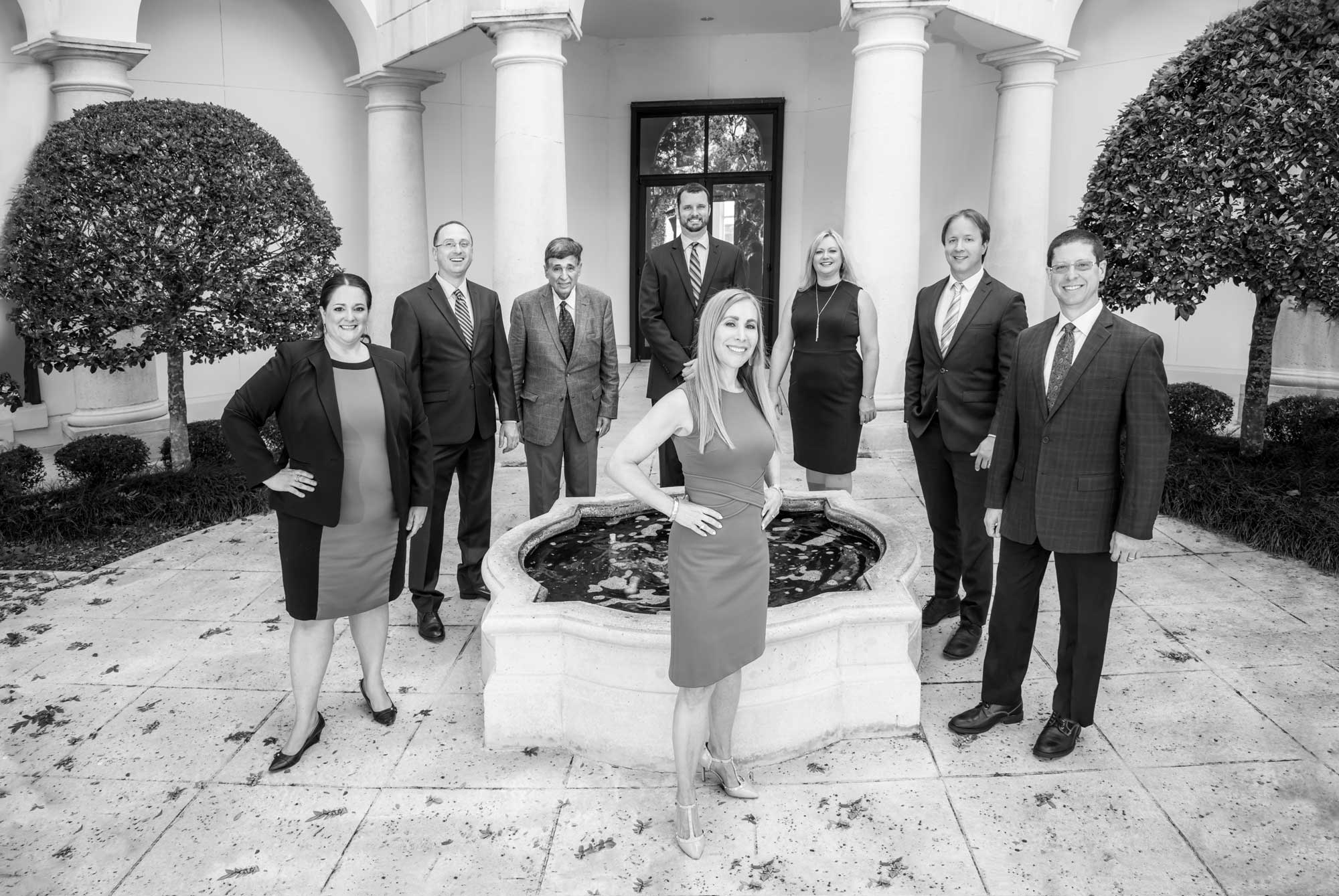On April 24, 2025, the Florida Senate passed the Florida Contracts Honoring Opportunity, Investment, Confidentiality, and Economic Growth (“CHOICE”) Act (“the Act”).[1] If signed into law by Governor DeSantis, the Act will take effect on July 1, 2025.[2] The Act does not replace the current non-compete statute (section 542.335, Florida Statutes), but it instead provides further protections for employers related to certain employment agreements. The Act will be codified in Chapter 542, Florida Statutes.[3]
According to the Legislative Findings section of the Act, the Legislature determined that “a proper and legitimate state interest is served by enforcing strong legal protections in contracts between employers and contracted personnel which encourage optimal levels of information sharing and training and development.”[4] The Legislature noted that it felt that “nondisclosure agreements, fixed-duration term contracts, and nonsolicitation clauses in employment contracts [] are inadequate to protect against the significant global risks faced by companies in this state.”[5] It is apparent that the Legislature felt that section 542.335 alone did not provide adequate protections to companies related to certain employment agreements.
Turning to the definitions under the Act, it defines “covered employee” as
an employee or individual contractor who earns or is reasonably expected to earn a salary greater than twice the annual mean wage of the county in this state in which the covered employer has its principal place of business, or the county in this state in which the employee resides if the covered employer’s principal place of business is not in this state. The term does not include a person classified as a health care practitioner as defined in s. 456.001.[6]
It is important to note that the Act covers contractors, but it does not cover health care practitioners as defined in section 456.001.[7] Furthermore, the Act covers only employees who earn a certain salary, as determined by the mean annual wage in the relevant county as established by the United States Department of Labor, Bureau of Labor Statistics.[8] By way of example, in Orange County for the second quarter of 2024, the average annual wage was $60,268.[9] Thus, the Act would apply to employees who earn a salary greater than $120,536.[10] Under the Act, a “covered employer” is “an entity or individual who employs or engages a covered employee”; there is no requirement for number of employees for an employer to be covered.[11]
The first type of agreement covered by the Act is so-called “garden leave agreements.”[12] The Act defines “covered garden leave agreements” as follows:
- The covered employee and covered employer agree to up to, but no more than, 4 years of advance, express notice before terminating the employment or contractor relationship;
- The covered employee agrees not to resign before the end of such notice period[13]; and
- The covered employer agrees to retain the covered employee for the duration of such notice period and to continue paying the covered employee the same salary and providing the same benefits that the covered employee received from the covered employer in the last month before the commencement of the notice period. The covered employer is not obligated to provide discretionary incentive compensation or benefits or have the covered employee continue performing any work during the notice period.[14]
In effect, the garden leave agreement permits employers to prevent employees from working for four years if the employer continues to pay base salary and benefits to the employee. The Act makes it clear that the garden leave agreement provisions apply if the covered employee maintains a “primary place of work in this state, regardless of any applicable choice of law provisions (i.e., no matter what the contract states the governing law is)” or if there is a covered employer whose principal place of business is in Florida and the agreement explicitly states it is governed by Florida law.[15] The garden leave agreements are enforceable if they meet the following requirements: (1) the covered employee is advised in writing of the right to seek counsel before entering into the agreement, (2) the employee acknowledges in writing “receipt of confidential information or customer relationships,” and (3) the agreement provides that (i) after the first 90 days of the notice period, the covered employee does not have to continue working for the employer; (ii) the employee can engage in nonwork activities at any time during the remainder of the notice period; (iii) the covered employee may, with permission from the employer, work for another employer while still employed by the covered employer during the remainder of the notice period; and (iv) the agreement notice period may be reduced during the notice period if the employer provided at least thirty days’ advance notice in writing to the employee.[16] Employers must provide at least seven days’ notice before an offer of employment expires or must provide at least seven days’ notice before the date that an offer to enter into the garden leave agreement expires.[17]
In the event of a breach of a valid garden leave agreement by an employee, the Act provides that courts must first enter a preliminary injunction prohibiting the employee from “providing services to any business, entity, or individual other than the covered employer during the notice period.”[18] The courts are permitted to modify or dissolve the injunction “only if the covered employee establishes by clear and convincing evidence” that the employee will not perform during the notice period any work similar to the services provided to the employer during the three-year period preceding the notice period or use confidential information or customer relationships of the employer or that the employer has failed to pay or provide the salary and benefits required under a garden leave agreement and had a reasonable opportunity to cure the failure.[19] Likewise, the Act permits businesses to seek injunctions against companies that hire the covered employee.[20] It is apparent that the Act is a strong tool for employers.
In addition to garden leave agreements, the Act also applies to certain non-compete agreements.[21] The Act defines “covered noncompete agreement” as “a written agreement, or a portion of a written agreement, between a covered employee and a covered employer in which, for a period not to exceed 4 years and within the geographic area defined in the agreement, the covered employee agrees not to assume a role with or for another business, entity, or individual[.]”[22] Notably, the four-year limit is greater than the limit set forth in section 542.335(d)1., which provides that for restrictive covenants (including noncompete agreements), “a court shall presume reasonable in time any restraint 6 months or less in duration and shall presume unreasonable in time any restraint more than 2 years in duration.”[23] No geographic restriction is set forth in the Act. The notice provisions related to noncompete agreements are similar to the provisions related to garden leave agreements.[24] Like the breach provisions for garden leave agreements, the Act provides that if an employer seeks enforcement of a covered noncompete agreement, a court must issue a preliminary injunction against the employee (or the new employer).[25] The pertinent provision of the Act concludes by asserting, “Any action regarding a restrictive covenant that does not meet the definition of a covered garden leave agreement or a covered noncompete agreement as provided in this part is governed by [section] 542.335.”[26]
This new Act contains vague and inconsistent provisions and will undoubtedly be challenged in the courts. It is unclear whether companies will transition to enforceable garden leave agreements and four-year noncompete agreements, but we will monitor the Act and its legal challenges and provide updates as they become available. If you have any questions or concerns regarding this topic, or any topic related to labor and employment law, please contact us.
[1] Bill History, House Bill (“HB”) 1219, The Florida Senate, available at https://www.flsenate.gov/Session/Bill/2025/1219 (last visited May 29, 2025). The Florida House of Representatives passed the bill on April 23. Id. The text of the bill is available at https://www.flsenate.gov/Session/Bill/2025/1219/BillText/er/PDF (last visited May 29, 2025).
[2] HB 1219, at § 22.
[3] Id., at §§ 1-2.
[4] Id., at § 2 (setting forth what will become section 542.42, Fla. Stat., and the other provisions that will be incorporated into Chapter 542).
[5] Id.
[6] Id. (setting forth what will become section 542.43(3), Fla. Stat.) (emphasis added).
[7] Id.
[8] Id.
[9] County Employment and Wages in Florida—Second Quarter 2024, U.S. Dep’t of Labor, Bureau of Labor Statistics, available at https://www.bls.gov/regions/southeast/news-release/countyemploymentandwages_florida.htm (last visited May 29, 2025).
[10] HB 1219, at § 2.
[11] Id.
[12] Id.
[13] The Act defines “notice period” as “the date from the covered employee’s or covered employer’s written notice of intent to terminate the covered employee’s employment through the date of termination as set forth in a covered garden leave agreement.” Id. (what will become § 542.43(8), Fla. Stat.).
[14] Id.
[15] Id.
[16] Id.
[17] Id.
[18] Id.
[19] Id.
[20] Id.
[21] Id.
[22] Id. (setting forth proposed § 542.43(6), Fla. Stat.).
[23] § 542.335(d)1., Fla. Stat. (2025).
[24] HB 1219, at § 2.
[25] Id.
[26] Id.
Photo by charlesdeluvio on Unsplash
















